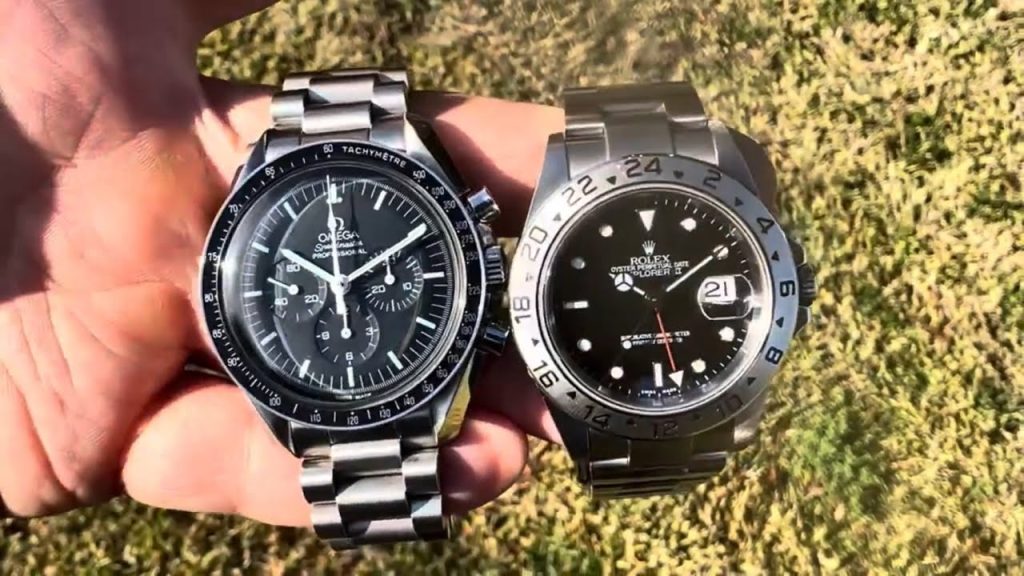Historical Background: The 1953 Unreleased ‘Explorer Zero’ Prototype
For decades, Rolex has built its reputation on clarity, continuity, and carefully calculated innovation. Yet in 2024, the brand pulled off one of the most enigmatic launches in its modern history—a subtle but groundbreaking release that resurrected an unreleased prototype from the golden age of tool watches. Quietly labeled the “Explorer Zero” by insiders, this piece had never officially appeared in catalogs, never made it to production, and yet had long existed as a whispered legend among collectors.
The year was 1953. Rolex had just tested its iconic Oyster Perpetual on the summit of Everest, a feat that would cement the Explorer line in horological folklore. But deep within Rolex’s Geneva archives sat another project—a parallel prototype developed as a backup in case the final Explorer concept failed in testing. This early tool watch, built with an even more compact case and a domed dial configuration, was informally dubbed the “Explorer Zero” by its in-house designers. Designed with a smaller 34mm case and an experimental movement cased in a pre-Bubbleback shell, it featured a no-date dial, oversized numerals, and the rudimentary beginnings of what would become the signature 3-6-9 layout.
According to declassified service memos uncovered in 2022, only five prototypes of the Explorer Zero were ever assembled. Two were worn by Swiss geologists on expeditions to the Greenland Ice Sheet in 1954. The rest, according to records, were quietly dismantled or lost. The design was deemed too niche, and the broader commercial success of the standard Explorer model made the alternate design obsolete.
But Rolex never truly discards ideas—it preserves them. The brand’s archives are not just repositories of history but incubators for the future. And in 2024, with vintage-inspired models dominating collector wish lists and the heritage-driven luxury market in full bloom, Rolex made a decision that would shake the very foundations of modern “neo-vintage” watchmaking.
Technical Breakthrough: Merging Modern Cerachrom with the Vintage Bubbleback Case
The reintroduction of the Explorer Zero was not a mere reproduction. It was a feat of engineering that fused old-world aesthetics with Rolex’s most advanced materials. At the heart of the 2024 version is a 36mm Oystersteel case that faithfully recreates the original curvature of the 1953 prototype. The key twist? The incorporation of modern Cerachrom ceramic into the bezel and crown guards—elements never seen before in this particular case format.
This fusion was not just for show. It represented the first time Rolex had managed to mold and machine Cerachrom to match the asymmetric, domed profile of the classic Bubbleback. Achieving this required the development of a proprietary heat-treatment and CNC milling process. The result is a bezel with the durability of ceramic but the subtlety and warmth of vintage steel.

The dial also pays homage to the past with matte textures and luminous paint deliberately colored to mimic the aged tritium of the 1950s. But look closer, and you’ll see Rolex’s latest Chromalight compound glowing a crisp icy blue—an unmistakable nod to the contemporary Explorer line.
Inside the case is the all-new Calibre 3280, an evolution of the 3230 movement but modified with enhanced anti-magnetic protection and a re-engineered balance bridge. With a 70-hour power reserve, a Parachrom hairspring, and Superlative Chronometer certification, the movement silently reiterates Rolex’s mantra: you may see the past, but you wear the future.
Even the bracelet is a hybrid—an updated Oyster bracelet with a brushed center link and a double-locking clasp system refined for smaller wrists. It’s subtle. It’s confident. It’s Rolex at its most cerebral.
Industry Impact: Redefining the ‘New Vintage’ Aesthetic
The launch of the Explorer Zero didn’t come with splashy ads or celebrity endorsements. Instead, Rolex did what it does best: controlled scarcity, cryptic communication, and letting the product speak for itself. Rumors of the watch’s existence began spreading at Watches & Wonders Geneva in early 2024, where select collectors were invited to private previews. Within hours, social media lit up with leaked images and speculative comparisons to obscure Explorer references.
Within weeks of the public release, secondary market prices had doubled. Vintage dealers began scouring records for mentions of the original Explorer Zero prototype. Forum debates erupted over the legitimacy of the original pieces. Was Rolex hinting that more prototypes might be “discovered”? Was this model simply a tribute—or was it an act of horological archaeology?
But more than the hype, what truly resonated was Rolex’s ability to redefine what “new vintage” means. Unlike brands that simply reissue old models with minor cosmetic tweaks, Rolex used the Explorer Zero to ask a deeper question: What if we continued a design story that never got its chance to live?
The answer, it seems, is a timepiece that appeals to both ends of the collector spectrum—the romantic who dreams of golden-age expeditions and the modernist who demands cutting-edge performance. In doing so, Rolex has not only reasserted its command over the heritage watch segment but challenged competitors to raise the bar. Tudor, Omega, Longines, and even Grand Seiko have all embraced retro design language in recent years. But few have done it with Rolex’s quiet authority and surgical precision.
The Explorer Zero now serves as a blueprint for how to revive history without mimicking it. It doesn’t pretend to be a 1953 watch. It is a 2024 watch that honors 1953’s ambition.
Conclusion: The Resurrection That Wasn’t Supposed to Happen
Why did Rolex bring the Explorer Zero back now? The answer lies not just in trends but in timing. 2024 marks over 70 years since the original Explorer first climbed Everest. It’s a year when nostalgia meets innovation. When collectors are no longer satisfied with surface-level tributes. When the past must do more than inspire—it must evolve.
The Explorer Zero was never meant to be seen. It was a discarded blueprint, a side-note in Rolex’s timeline. But its resurrection proves something essential: the strongest ideas never die. They wait. And when they return, they reshape the future.










































